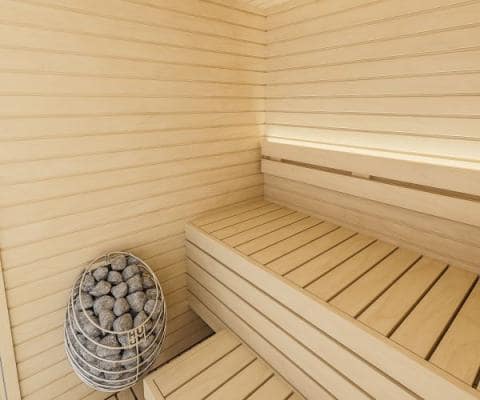The Greatest Guide To Traditional Sauna
Table of ContentsGetting My Traditional Sauna To WorkUnknown Facts About Traditional SaunaThe Basic Principles Of Traditional Sauna 3 Simple Techniques For Traditional Sauna
A lot of the weight lost in a sauna is water loss and is re-gained upon rehydrating. Without a doubt sauna can be a crucial component of a healthy weight loss program. To check out the distinctions between traditional and IR saunas, I will divide these right into proven, academic, and made differences.Hence, the most popular factor in the saunawhich goes to the ceiling directly over the sauna heateris normally in between 185 and 190 F. Traditional Sauna. Claims that a typical sauna surpasses 200 F is merely not real and not suitable for electric saunas marketed in the US. The temperature for a far-infrared sauna is generally established in between 120 and 140 F; nevertheless, unlike the traditional sauna, the objective in and IR area is not to accomplish a high temperature level
Due to this, the temperature difference is nearly unimportant, since profuse sweating leads to both sauna kinds, but the approach of warming the body is different. In an IR sauna the bather will really feel hot and will certainly sweat profusely, yet at much lower temperatures. Hence, if the goal is to spend longer time periods in the sauna, the IR sauna is a good choice.

The Of Traditional Sauna
When the high temperature is accomplished, the elements cycle on and off to maintain the heat. Most typical sauna customers delight in pouring water over the rocks to develop vapor to elevate sauna humidity degrees. The benefits of putting water over the rocks include: making the area more comfy, moistening the nasal flows, and allowing the use of aromatherapy by mixing crucial oils with the water.
In a far-infrared sauna, the warm front permeate the body to properly heat up the body and raise the body core temperature level. To accomplish this raised temperature, Far-infrared emitters produce infrared power which is close to the very same wavelength as that which the body naturally emitsoften described as the "Crucial Range" of 7 to 14 microns), so the power is well gotten by the body.
When the energy gets in the body, it triggers the body temperature level to raise and inevitably results in sweat. In an infrared sauna it's crucial for the emitters/heaters to remain on almost continuously. Because there is no mass of rocks to keep warmth, the sauna will cool down if the emitters turned off.
As stated over, the sauna bather in an infrared space intends to position himself before running emitters to get maximum take advantage of the warm. The home heating time for the two spaces can be really different, relying on exactly how the spaces are made use of. For a typical sauna, a bather needs to enable 30-40 minutes for the room to achieve a wanted temperature and to appropriately pre-heat the rocks.
Some Ideas on Traditional Sauna You Should Know
A well built sauna will normally accomplish a temperature level of 150-160 F in regarding see page 30-40 mins. For hotter temperature levels, the space might require to warmth for look here a longer duration.
To some, 15 minutes was "squandered" while the infrared power heated up the timber panels instead than warming a body, while others discover a pre-heated room to be a lot more comfy and think an elevated beginning temperature level is needed to begin perspiring. The size of recommended use for each and every space is about the exact same (10-15 mins per session); nevertheless, because of the reduced air temperatures and the ability to really feel the impacts of infrared warm faster than a conventional sauna, it is not unusual for an individual to spend a total of 20-30 minutes in an infrared sauna.
Standard saunas often tend to be bigger (hence make use of even more power) than infrared saunas, although standard saunas are definitely offered in one and 2 individual dimensions also. For a two-person traditional sauna, 5x6 or 5x7 dimension is most preferred. The top bench can conveniently seat two or 3 individuals and is likewise enough time to exist down during the sauna session.


The typical price per kWH of electrical power in the U.S. is approximately $0.11, so a 4.5 kW heater will cost about $.50 to compete one hour, if the heater runs continually for one hour. Commonly a sauna heater will certainly compete 75% of the initial hour and 50% of succeeding hours on since the elements cycle once the set temperature level is attained.
Some Known Factual Statements About Traditional Sauna
A 2 person far-infrared room is normally physically smaller sized than a standard sauna, typically about 4' x 4' or smaller. The IR furnace is commonly 1.5-1.7 kW utilizing a 120 volt 15 amp plug-in service. Given see this site that the area can be used faster than a sauna room, we will certainly presume the room is utilized for to of an hour consisting of warm up time.
Ultimately, there is a hardly ever talked about distinction in the social experience in between both areas. While our culture has actually lost a few of the social advantage of the traditional sauna experience, it can be very socially rewarding. From family members time in the sauna, to heart-felt conversations with loved ones, to sauna partiesthe standard sauna experience can cause intimate socializing.
The majority of greater end infrared rooms include colored light treatment, sound systems and full-glass fronts.
Comments on “An Unbiased View of Traditional Sauna”